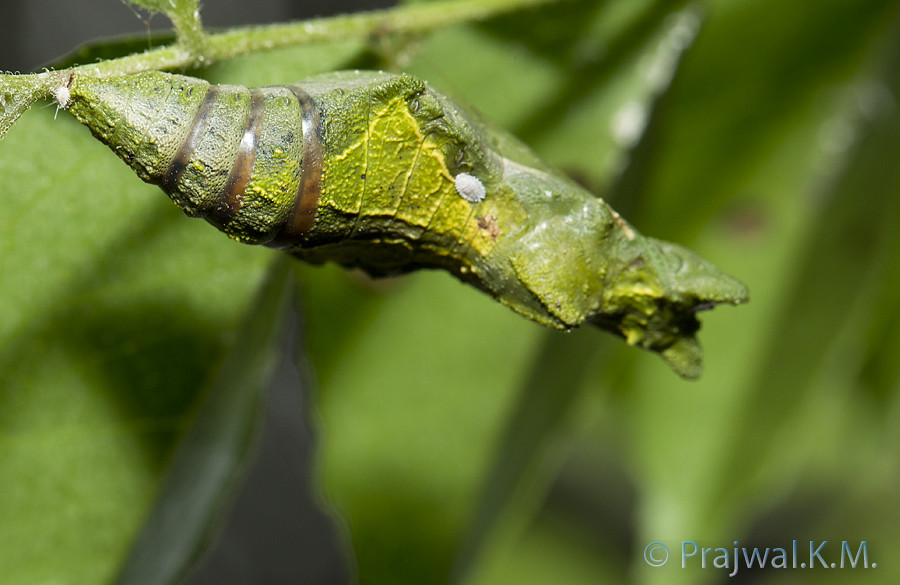Saturday 8 December 2012
Tadoba – Into the Forests of Kipling’s Jungle Book
Saturday 27 October 2012
Gudavi – Malnad’s Hidden Wonderland
 |
| Black headed ibis |
Deep within Malnad *, where the district of Shimoga meets Uttara Kannada district, there exists a seasonal lake surrounded by dense forest. Every year, from August to November, this lake plays host to hundreds of nesting ibises and egrets. The lake and a portion of the surrounding forest form the Gudavi Bird sanctuary.
Saturday 4 August 2012
Tiger Tiger Burning Bright
 |
| A cub making its way to mother |
Imagine a heavily wooded valley with you on one side and a
family of tigers, feeding on a kill, on the other. This was the scene which greeted us on our
first safari into Bandhavgarh. A few
minutes later, the mother tigress’s call reverberated through the jungle,
making the cubs – which had wandered off – to move back towards the kill and
reminding us of where we were. We were
in Tiger Country.
Thursday 12 April 2012
Ranganathittu - A Birder's Paradise
On the banks of river Cauvery lies a gem of a bird sanctuary. Though less than a square kilometer in area, Ranganathittu has a very high bird count, both in species and in numbers. In spring and summer, aquatic birds like spoonbills, river terns, open bill storks, pelicans, painted storks nest in small islands in the river, while terrestrial birds like Tickell's blue fly catcher, fan-tail flycatchers, peafowls, tailor birds flitter about on the river bank.
Friday 9 March 2012
Rann of Kutch: Desert of Life 2
Greater Rann of Kutch
A journey of around 6 hours from Rann Riders brought us to Nakhatrana where our stay was arranged in Centre for Desert and Ocean. Our days here were to be spent exploring the Banni grasslands.
The Banni grasslands of Greater Rann of Kutch are very different from the dried up landscape of Little Rann of Kutch. Due to volcanic activity in the distant past, a few rocky hills litter the land. There is even a rock, by the name of bird rock, where one can find red-tailed wheat ears. Most of the grassland is covered by pock marks caused by thousands of cranes digging the ground for dried tubers.
Tuesday 6 March 2012
Rann of Kutch: Desert of Life 1
Little Rann of Kutch
On first impression, the Rann of Kutch is a vast, arid landscape, apparently devoid of all life. As far as the eye can see, the sun baked landscape stretches out without a mountain or a hill to break the monotony. Only the mirages playing on the horizon give a false impression of the presence of life saving water. But, spend some time here, and that mirage may well turn out to be thousands of flamingos feeding in a still surviving lake.
 |  |  |
| Kutch Landscapes |
On first impression, the Rann of Kutch is a vast, arid landscape, apparently devoid of all life. As far as the eye can see, the sun baked landscape stretches out without a mountain or a hill to break the monotony. Only the mirages playing on the horizon give a false impression of the presence of life saving water. But, spend some time here, and that mirage may well turn out to be thousands of flamingos feeding in a still surviving lake.
Monday 5 March 2012
Dodging and Burning - An Overview
A while back, I had been to Ranganthittu to photograph the river terns. For those who don't know where Ranganthittu is, it is a bird sanctuary comprising of a cluster of islands in Cauvery river, near Mysore. A lot of birds - openbills, painted storks, pelicans, river terns ... - come here to breed. The river terns, in particular, nest on a small rock in the middle of the river.
The lighting conditions in Ranganthittu are not exactly optimum. One can never get all the elements in the image properly exposed. When the bird is exposed properly, the rocks, covered with guano, become hopelessly over exposed. When the exposure is based on the rocks, the bird becomes underexposed. To add to the complication, the river tern is a predominantly black and white (silvery grey to be exact) bird, making the exposure even more difficult.
The lighting conditions in Ranganthittu are not exactly optimum. One can never get all the elements in the image properly exposed. When the bird is exposed properly, the rocks, covered with guano, become hopelessly over exposed. When the exposure is based on the rocks, the bird becomes underexposed. To add to the complication, the river tern is a predominantly black and white (silvery grey to be exact) bird, making the exposure even more difficult.
Subscribe to:
Posts (Atom)

